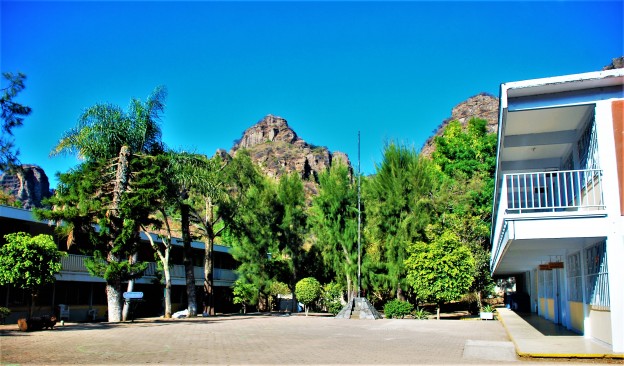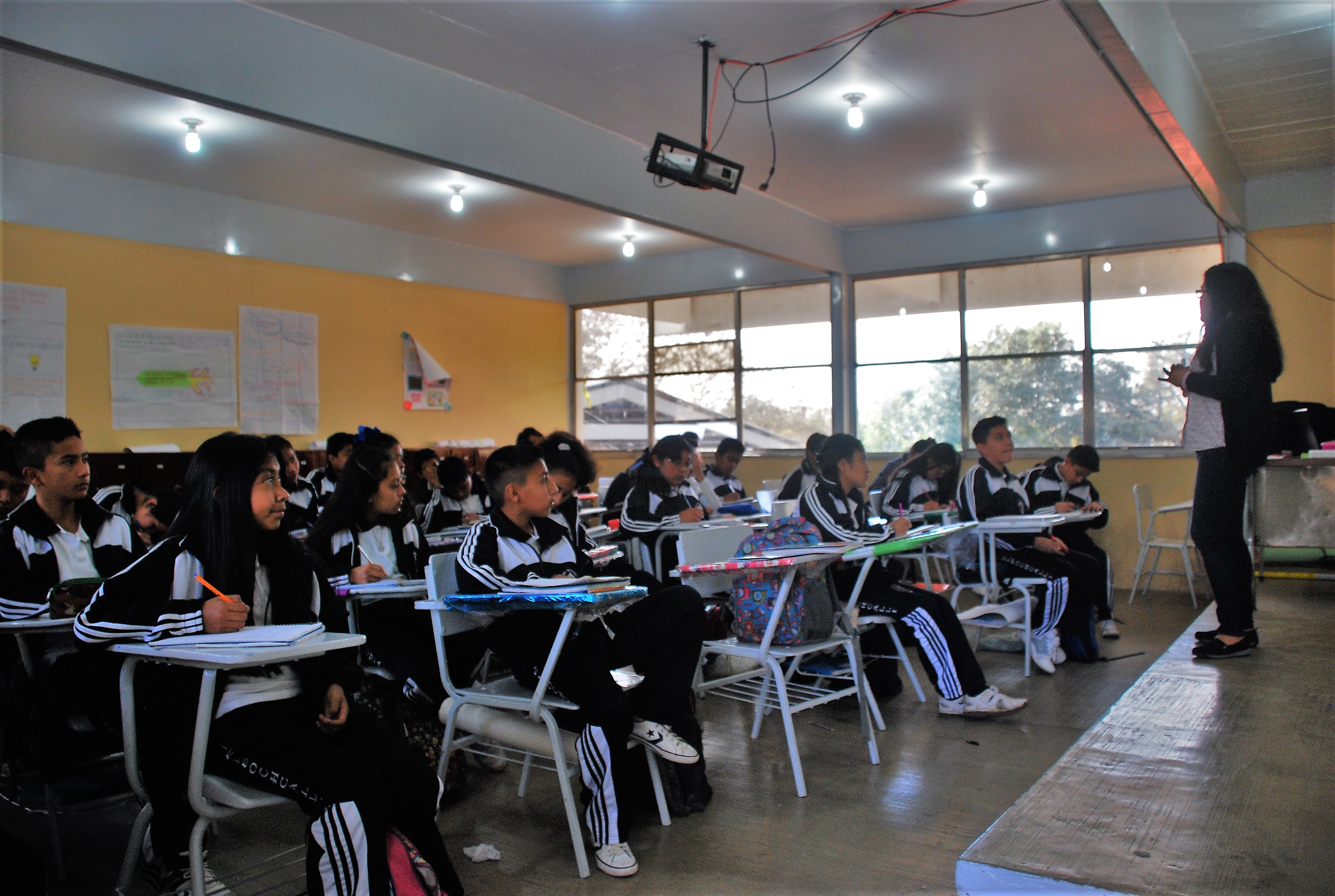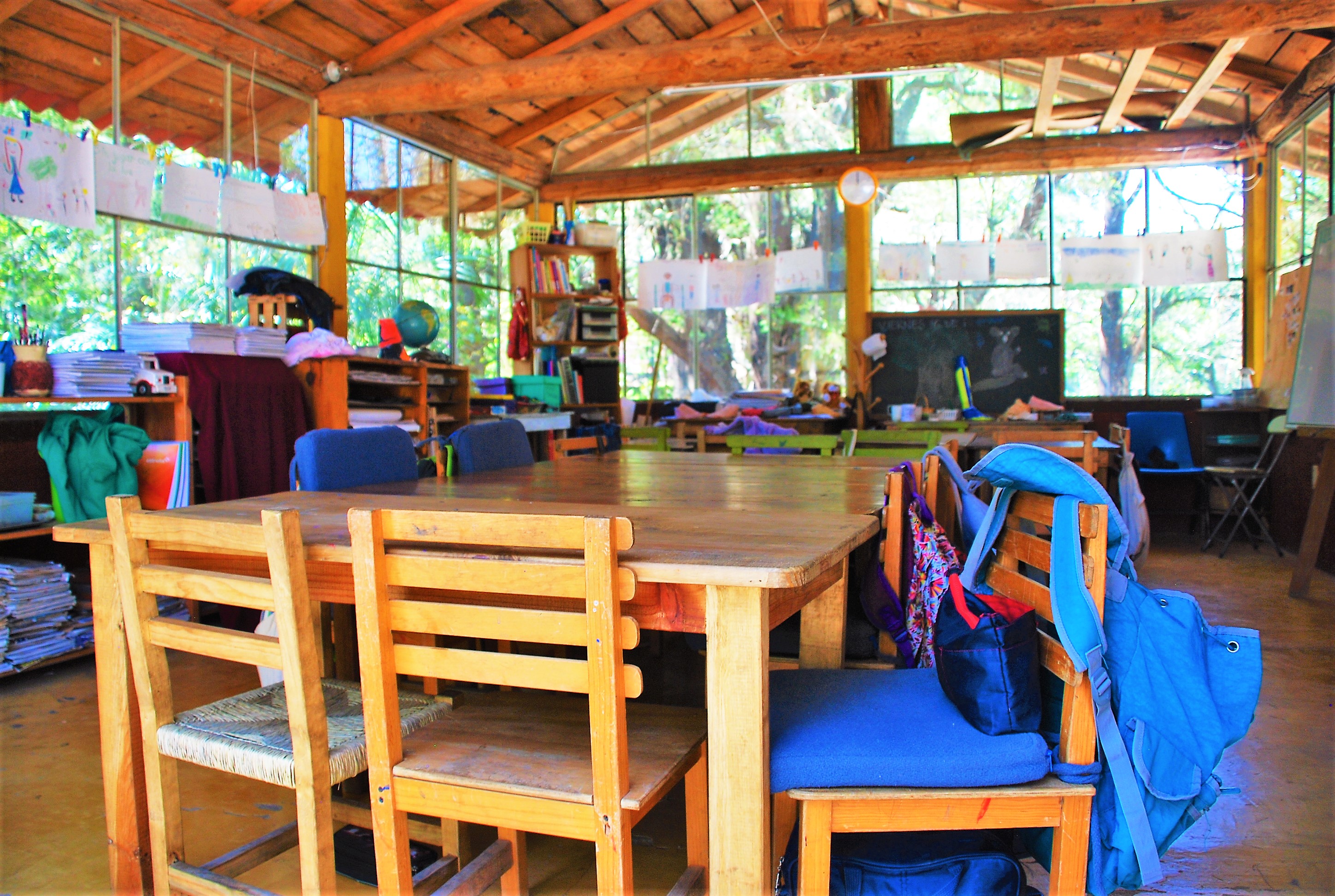In a lecture by Araceli Radilla, an educator and former Secretary within the Secretary of Public Education, we learned that the Mexican education system has its share of struggles and the dropout rate in public schools is very high. Many children need to work to support their families, and a recurring theme in the talks we have heard have touched on the in-accessibility of education in Mexico. (Radilla, A., personal communication, 2018, February 28). Although the government says that schooling is free of charge and provides free textbooks for primary school children, there is corruption that has kept rural schools underfunded for quite some time. There is also a shortage of buildings, teachers and textbooks that has been exacerbated by the earthquake on September 19, 2017. (Mariel, personal communication, 2018, February 13).
Urban public schools are better, but the standard of education is still relatively low. Private schools, have a higher standard of bilingual education that is usually marketed to expat children, children of people who live outside their native country. Most commonly, they are children of diplomats, business men or women, and teachers. That being said, despite there not being a tuition fee for public schools, parents of children in public schools are still responsible for a “cooperation,” which helps subsidize the disparity between the resources provided by the government and the resources needed to maintain a fully functional classroom. This fee ranges between 800 pesos and 1500 pesos and is used for classroom materials and building upkeep.
From what we saw during our time in Amatlan and more broadly in the Tepoztlán municipality through our school observations, we were impressed by the creative ways teachers are confronting issues and creating culturally competent classrooms. We had the opportunity to visit some private schools near Tepoztlan, Mexico which are also striving to address the diverse needs of child learning. These schools were the Montessori style Primaria Teixtomani in Tepoztlan and an Waldorf style school. Both schools displayed more open learning which allows the students to navigate the world and see what is important and why. Within the grades, children were grouped together, allowing for the spread of knowledge between students. They work to diversify and rotate the learning material, so each student is given opportunity to expand their knowledge in their own space; When they are ready they will help teach the other student which helps them to solidify their own understanding. Both schools also incorporated permaculture into their curriculum, which focuses on how agriculture can be developed in a self-sustaining way and aspects such composting. They schools integrating it into such classes as biology, herbology, and even cooking classes in the Waldorf school which can teach everything from nutrition, mathematics, and economics.
Despite their creativity, we couldn’t help but wonder about the reality of affordability. As we mentioned previously, parents of children in public school are responsible for a co-operation fee. This seemed burdensome for many families and for families to afford private school tuition and a co-operation fee seemed even less realistic. We learned that tuition for the Montessori school is about 2000 pesos, while the Waldorf style, was more than 4,000 pesos. While we did not get much information from the Montessori school about financial assistance, the founder, Adriana, did say that the school is a business and they do need tuition money to support operational costs. The Waldorf school did share that they have both programs and scholarships for families of lower incomes. If they are unable to receive a scholarship, the school works with the families to see what they can contribute to the school’s community; this can be anything from being a community teacher in the classroom, to helping repair desks, or other school upkeep.
Overall, we were able to get a fuller picture of Mexico’s education system. The impression left by the teachers, and their desire to further the possibilities for their children, is something that we believe many teachers worldwide can relate to. As we continue with our semester, these visits will help us as educators to make more culturally sensitive learning environments, that adapt to our ever-changing global society.
Adriana, Founder. (2018, February 16). Primaria Teixtomani in Tepoztlan [CGEE Global Studies and Education Students Interview]. Translated by Lisanne Morgan.
Chelsey, Maestra. (2018, February 13). Waldorf style school near Amatlan. [CGEE Global Studies and Education Students Interview].
Mariel, Maestra. (2018, February 13). Amatlan’s Primary school [CGEE Global Studies and Education Students Interview]. Translated by Lisanne Morgan.
Principal. Assistant Principal. Maestro. (2018, February 15). Secundaria Telpochcalli school [CGEE Global Studies and Education Students Interview]. Translated by Lisanne Morgan.
Radilla, A., Educator and former Secretary within the Secretary of Public Education. (2018, February 28). Mexican Education System [Lecture]. (Morgan, L., Trans.). Cuernavaca, Mexico.



